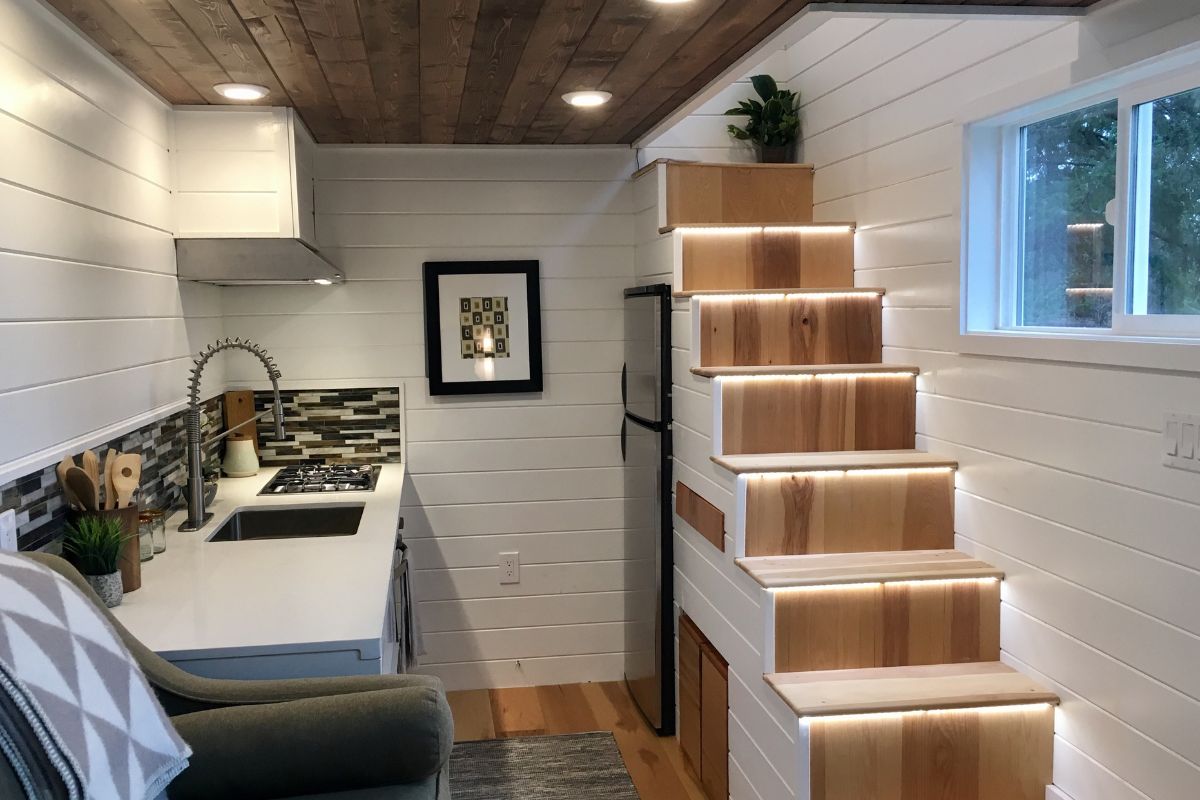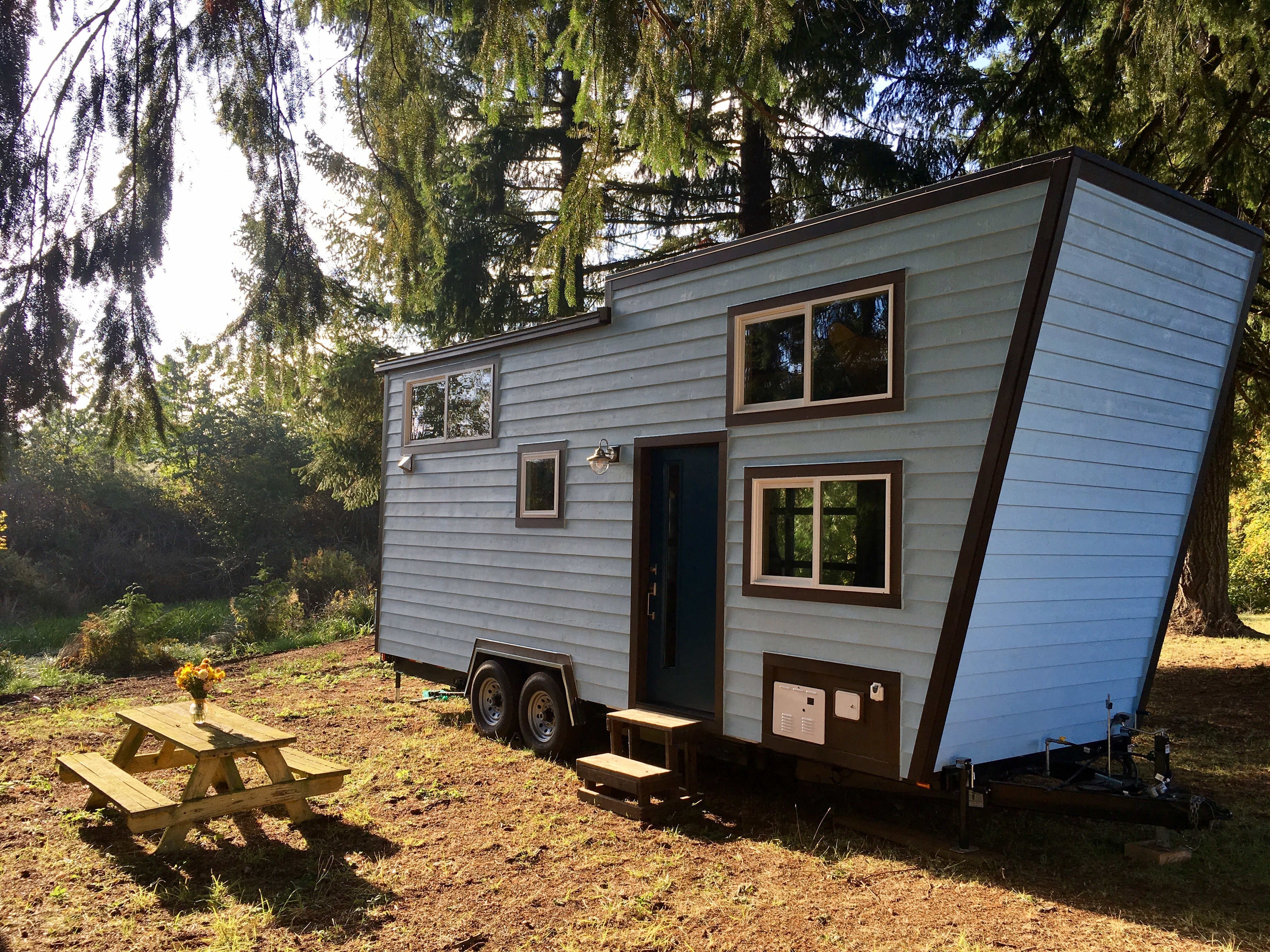Maximizing Space with Multi-Functional Furniture
Multi-purpose furniture is one of the most cost-effective and efficient ways to make the most of a tiny house. If every inch counts, it’s essential to choose multifunctional objects. Seek out sofa beds, folding desks, and storage ottomans. Such solutions allow you to cut costs while maintaining your basic living and study space. A sofa bed, for instance, can serve as both a social couch and a sleeping bed. Storage ottomans are ideal for storing books, blankets, or other things while serving as seating or a coffee table. By choosing functional pieces, you’ll keep your space clean and comfortable.
If managing a tiny house project feels overwhelming, especially with studies piling up, consider reaching out for professional support. You can use the support of an essay writing service with native writers. This way, you can design your space without neglecting coursework.
Creating Spaces for Work, Relaxation, and Sleep
Within a limited area, marking off specific zones for activities may bring order and meaning. Consider arranging furniture to make areas for studying, relaxation, and sleeping. This way, even if your house is small, you’ll still have room for every facet of student life. Start with marking a corner or space in your room to create a study nook. Place a small or wall-mounted table and a comfortable chair on it. If you need to relax, a good couch with throws and pillows will go a long way. At the same time, keep your sleeping space as neat as possible, even if it’s only a room partition or curtains. Creating these zones will help you devote more attention to every action and expand your tiny home.
.png)
Bright Closets to Keep Things Out of Reach
Clutter can quickly fill a room, particularly when limited space is involved. And that’s why a tiny home needs efficient storage. There are plenty of ways to keep your space organized, from vertical shelves to under-bed storage. If you’re trying to store books, decor, or study materials that aren’t floor-hogging, try installing wall-mounted shelves. Closets or drawers beneath your bed can be used for clothing, shoes, or linens. Don’t forget the area above doors or cabinets, where you can add extra shelves to hold the things you don’t use often. By organizing correctly, you’ll preserve the open-air feel of your room.
Lighting Tricks to Make Your Space Feel Bigger
Light can make a difference in how large a room feels, particularly in a small house. There’s nothing like a bit of sunlight to make things pop, so avoid curtains on the windows and get lighter shades of blinds or sheer curtains. If you lack natural light, install lamps or LED strips to light up dark areas. Consider lighting a combination: a desk lamp for reading, floor lamps for ambient light, and even fairy lights for an extra cozy atmosphere. You can even use mirrors to magnify your space and cast light in your room. Use mirrors next to windows or lamps to make your tiny home look more prominent and spacious.
.jpeg)
Personal Touches to Make It Feel Like Home
Adding personality is how you transform a tiny house into your home, your oasis. Decor pieces in small sizes can make a small space into a home-like setting that expresses your personality. There are just some of the simplest ways to make your tiny house uniquely yours:
- Add Greenery: Indoor plants, even a few small ones, can brighten the room and improve air quality – a bonus in tight spaces.
- Create a Photo Wall: Display personal photos or create a mini gallery wall with postcards, artwork, or favorite prints.
- Use Soft Textiles: Throw blankets, decorative pillows, and area rugs in colors you love to add warmth and comfort.
- Incorporate Scented Candles or Diffusers: Scents you enjoy can create a relaxing atmosphere and make your space feel even more homier.
- Display Personal Items: To add character, keep a few favorite books, souvenirs, or decorative items on a shelf.
All these simple items create a safe, private environment for you to rest your weary head in. If you don’t have time to personalize your space because of academic duties, read the review of a top writing service provider. Expert writers can handle some tasks, giving you extra time to enjoy a cozy, well-organized space.
.png)
Minimalist Ways to Keep Your Space Clean
When you live in a small home, less is always more. Being minimalist can leave your home feeling minimalistic when you have limited space. Ensure you have the basics, and don’t bring things you’re not using or enjoying. Before introducing something new into your tiny house, you know where or what it is. Clear out and assess your belongings regularly to keep your space fresh and clean. Being minimalist means having a clean space that will give you comfort and performance in a small living space.
Taking advantage of Vertical Space to Store and Decorate.
When the floor area is constrained, vertical space is necessary. Space-saving wall storage can be creative, making small living spaces practical and comfortable.
Utilize Wall Shelves and Hooks
Wall-mounted shelves and hooks allow you to store necessities without clogging up your space. You can put kitchen supplies or even books on shelves or use hooks to hang bags, coats, or hats near the door. This layout keeps your home clean while providing quick access to your essentials.
Add Pegboards for Custom Storage
Pegboards provide versatile storage for a wide range of objects. Put them in the kitchen to store utensils, in your study space to hold supplies, or by your doorway for keys and little bits. Pegboards are easily moved around depending on your changing needs, making them practical and versatile.
.png)
Opt for Hanging Organizers
You can hang these organizers on shoes, cleaning supplies, or smaller accessories. Storing these by the door or in unoccupied corners makes your space feel organized without using up floor space. Select those with multiple pockets to make things even more accessible.
Create a Unique Style with Wall-Mounted Accessories
Aside from practical reasons, vertical storage makes your tiny house look beautiful. From decorative racks to special hooks, these elements let you show your personality and individualize your space. The result is an efficient, well-designed, and stylish space for your business.
Vertically, you can convert a small living space into something functional and beautiful, an accommodating and organized area that suits your needs.
Designing Your Ideal Tiny Home
Being a student in a tiny house allows you to decorate your space creatively. If you’re practical, minimalistic, and cozy, you can make your home comfortable and elegant. Everything from multipurpose furniture to storage hacks can add value to your tiny home lifestyle. Enjoy creating your space, and learn how the most miniature house can become your home.






Share: